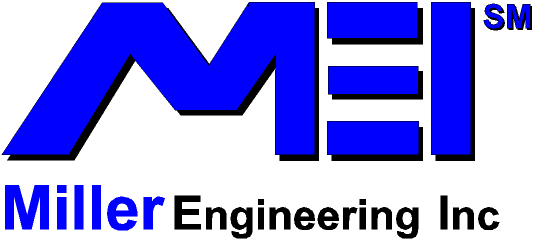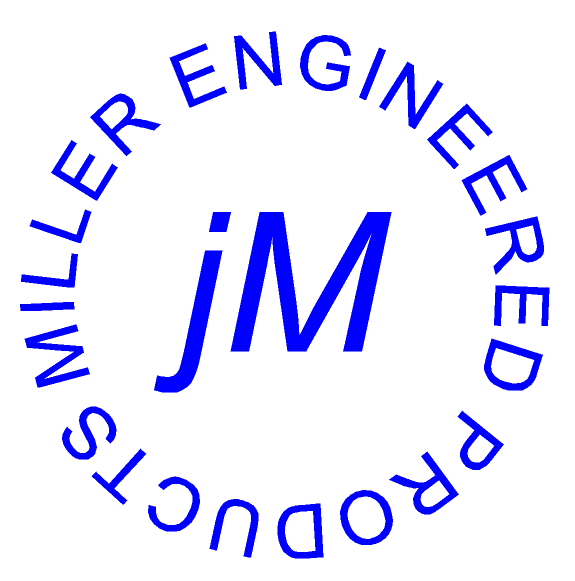|

1993-2008
PRODUCT HISTORY
The concept of
MID-LIFT®
geometry began back in 1972 for the BOSS 429 Hemi, an engine which
had arguably the most complex valve train of any American made engine in
history. After months of changing push-rod lengths and elevating stands to
experiment with pivot locations on the original steel NASCAR rockers he was
routinely winding up to 8,800 rpm, he established the values of perpendicular
tangent points and quantified the significant losses in ratio and duration when
these weren't maintained. By 1973, these concepts were applied to his first
design of aluminum rockers that would use the original NASCAR shafts and
modified stands. These later became known as the Series I. These were the first
to be finalized into the principles of precision geometry for a roller tip
rocker arm Jim Miller would aptly dub: "MID-LIFT."


This is the standard Miller Engineering Inc was founded upon at its
inception, in July of 1993. While other companies have continued to change,
modify, rethink, redesign and copy improvements for their rocker arms over and
over, Jim's Patent winning concepts have never wavered. In addition to
establishing "the standard" by which rocker arm geometry is defined,
other critical standards were developed which revolve around it; such as valve tip heights
for head preparation, necessary for accurate rocker arm designs; and geometry
tools that work - unlike the fixed height "stand checkers" and "plastic
pushrod checkers" sold for many years. These are useless because they don't
allow for NET valve lift; only a closed valve perspective, as if the valve will
never open.
Other innovations include such
standards as the "1 turn out" adjusting screw setting; the "twin beam" ball mill
relief, the "drip down oil hole," dual position oil feeds to and from needle
bearings; "needle THRUST bearings" (not just washers); "I-Beam"
and "Y-Beam" cross sectional rocker beams with reinforced tail
support webs straight up from the rocker's bottom bearing bore and around the
pushrod cup (or adjusting screw), where loads distort and stretch bearing
bore. And of course, other Patent Pending features thought of and used by no
other manufacturer that use the rocker arm's body as its own geometry tool,
with precision machined facets that synchronize to either the mounting stand,
the valve, the valve spring retainer, the rocker's stud or other fixed points
which allow the engine builder to follow easy but precise methods for
accurately installing the rocker arm; providing maximum transfer of cam
information with the very least amount of wasted in-and-out motion by the
push-rod and roller tip.

As with the Ford NASCAR system
(above), the SB-2 design was made from the same precise "stretch" the rocker
body's overall length to match exactly what was required between the valve
centerline and where the pushrod's alignment point with the tappet had to be.
This produced a very specific length for the rocker body, that NEVER CHANGED,
regardless of ratio. We simply MOVE the SHAFT around to adjust ratio to any
desired value. This meant the STAND needed to be specific for each ratio since
the shaft was in a different position with regard to the stand mounting bolts
with the head. NO OTHER COMPANY EVER designed their rockers to this concept, and
NONE do to this day. Other companies, regardless of "name or fame" all use a
fixed silhouette rocker "extrusion" with the grain running in the wrong
direction to the loads, and a fixed length from the shaft to the roller pin, and
RATIO is adjusted by moving the adjusting screw (pushrod) all over the place, on
a hit and miss value. The result is that the pushrod is not in alignment with
the tappet.
The above SB-2 systems were testing
by all of the top names of NASCAR, and produced more power than anything they'd
been using. The technology was adapted to their in-house rockers, as it
continues today.

PRO-STAND™ presented a new
definition of value on the ever escaping control of rising prices to what has
been promoted by the more advertised "name brand" rocker manufacturers as:
"professional." In 2003, MEI initiated the PRO-STAND series, machined with the
same, proprietary manufacturing technology used with the PRO-SHAFT series, but
for a much lower cost. Now, a fully machined billet alloy rocker arm for a
cost effective STAND MOUNT (aka "shaft") rocker system, that was comparable
in price to the highly advertised "sportsman" rockers, but offering strength,
precision and materials better than their professional systems costing upwards
of $2,000 - by the time you added on all their options - which are "standard"
with MEI designs!
The PRO-STUD™ fully machined
from solid billet 7150-T7, a 95,000 psi tensile proprietary Alcoa alloy, used
since 1995 by MEI for all its stud and shaft rockers (except PVS, which are
7075), sets a standard that no prior (or since) stud mount rocker arm can
compete. Besides being of precise MID-LIFT geometry for both intake and exhaust,
which often vary on compound geometry engines such as the 351C Ford, 429 Ford
and 454 Chevrolet, every facet of the rocker body's profile is a reference plane
to the valve, stud and even the pushrod angle in confirming accurate
installation. Technical details also included the ultimate lightest moment of
inertia, lightest overall weigh, and large 7/8" rifle-drilled 8620 steel
trunnions of unsurpassed strength, that also employ dual-flat machining to
remove the inherent stress riser creating sheer edge left by manufacturing of
"lesser" trunnions that are merely cross drilled through from one side. What's
the downside? COST, as usual. 2011 prices for these rockers now tip $1,200/set.
But if rules require "stud" mount rockers, and your effort is already expensive
in a serious class of championship competition, this is the ultimate stud
mounted rocker arm money can buy.

PA-Series™ was completely
designed, developed, assembled and shipping from the MEI facilities even
though they were the product of a separate company, Precision Valve Systems,
co-founded by Jim Miller and Antique and Classic car collector, George Shelley.
Specifically aimed at the larger Warehouse Distribution market, while offering
the same novel design features only found in Miller products. Rifle drilled
trunnions, "Measuring Face™" top angle for precision installed geometry;
7075-T6 Aircraft grade aluminum and of course precise MID-LIFT Design Geometry™
matching pushrod to valve specs for each engine. They were designed for the most
popular engines, the SB Ford and Chevy, and the BB Chevy which was often used on
the BB Ford (429-460).
The OE-Series™ is another
totally MEI product that was developed for PVS. This is probably the most
innovative, most popular and highly sought after "stock type" rocker ever made
for the SB Chevy and Ford engines. Why? First of all, it is the only shoe tip
rocker ever made of die stamped 4130 chromemoly steel. The cost in wear and tear
to tooling has always prohibited more mainstream companies from using this
material, opting for the standard 1018 series of "Mild" steel, then attempting
to put a band-aid on it with various heat treat tricks that work only for a few
minutes under racing applications. Secondly, this is no typical "shoe tip"
design. It has Patent pending geometry features never before used for a shoe tip
rocker arm, that simply means the rocker arm acts like a roller tip design, and
delivers maximum "area-under-the-curve" (100% cam information to the valve).
Traditional scuff pad designs have inherently lost a large percentage of the cam
information as the rocker moves through its arc, due to the shoe tip's design
and placement for its angle on the valve. Thirdly, this rocker has the same
precision, Patent pending innovation atop the rocker that was used on the PA
Series, and every rocker body Jim Miller has ever built. A specific angle that
provides precision installation for the valve lift being used to be sure the
operational efficiency with the cam is guaranteed. Fourth, the BALL FULCRUM,
which costs as much to make as the rocker body, is made of an advanced gun
barrel, oil impregnated powder metallurgy of intense strength, reduced friction
and maximum longevity, which uses a dedicated radius specific solely to that of
the PVS OE and PF Series (roller tip version) rockers. Lastly, all of this
together, has allowed class competition vehicles around the world to use spring
pressures nearing that of roller cam needs, and survive countless endurance laps
through multiple seasons. Some of our customers have continued to use their OE
Series rockers for many years on Sprint, Circle Track, and other forms of
maximum effort classes where the rules limit the rockers to "stock type" -- but
allow nearly anything else. 40,000 units were made before the tooling was
destroyed.

The PF-Series™, shares all
the design features of the OE Series (above), except that it is a roller tip
design. These were made in FOUR models, two for the SB Chevrolet in 1.5 and 1.6
ratios; and two for the SB Ford, in 1.6 and 1.7 ratios, respectively. Although
many sets were sold, the $89 to $120 price competed against cheap aluminum
rockers that diminished their market. Early versions also had a roller pin
problems from the stamping house, not helping their value. An otherwise superb
product, they were discontinued when the dies wore out.
The innovative Patent Pending
G-TooL™ not only sets
geometry, but teaches the value of precision valve train action for setting the ever critical rocker arm pivot points;
a mandatory principle to avoid wasting 3, 5 or even 10 degrees and more of cam
information during the
entire lift cycle through an over-arcing rocker arm. No other cam company or rocker arm manufacturer
in more than 40 years - regardless of name or
fame - has ever defined, explained or implemented so many fundamental
advancements to establish the standards of rocker arm geometry by which all
valve train development is measured. Period.

The Patented Miller
STUD-BRIDGE™
is another leap beyond the concepts of prior "stud girdle" attempts to
constrain the stud mounted rocker system from flex when high RPMs and spring
rates required it on applications that could not run a stand mounted (shaft)
system. Other systems have merely used two bars, sandwiched to "clamp
together" over extended adjusters, using only three or maybe five simple
5/16" bolts.
By comparison, the
STUD-BRIDGE™ uses massive 1/2" 8620 alloy bolts that "overlap" EACH
rocker's 8620 alloy MEI adjusters with an "eclipsed" cutaway that "grips"
each adjuster with TENSILE (pulling) power up to 85 ft/lbs of torque. Locking
this system up in a way that is actually more solid than even a shaft
system, simply because of LEVERAGE. A system that constrains flex by holding
it intact from a higher point of leverage, is far more effective.


MILLER MID-LIFT™
The Standard By Which All Is Measured!™
954-978-2171 MillerRockers@aol.com
MID-LIFT™, PRO-SHAFT™ & PRO-STUD™ are JM Miller Trademarks; Copyright © MMIII~MMXXIV
| |